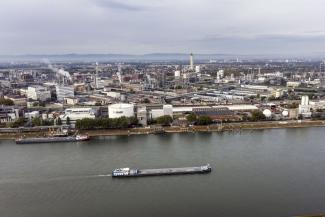Environmental sustainability
First steps towards keeping environment toxin free

In October 2020, the EU formally adopted the strategy. It is intended to be a first step towards a toxin-free environment. This goal is in line with the European Green Deal which the EU approved one year earlier (see D+C/E+Z e-Paper 2020/01, Debate).
Chemicals are playing an ever greater role in all spheres of our lives (see Olga Speranskaya and Hans-Christian Stolzenberg in D+C/E+Z e-Paper 2021/03, Focus section). The EU expects the chemical industry’s global production to double in the course of this decade and the application of chemicals to increase accordingly. Given that many chemicals have potentially harmful impacts on human health and the environment, the EU drafted the sustainability strategy.
The current state of affairs is that the EU already has the world’s most stringent chemicals regulations. Various directives are in force. The most important ones are called REACH (which stands for “registration, evaluation, authorisation and restriction of chemicals”) and CLP (“classification, labelling and packaging”). The new strategy stipulates a revision of those directives in order to ensure comprehensive information concerning all chemicals produced in – or imported to – the EU. The idea is to identify problematic substances fast and to eliminate them gradually from consumer products.
Specific chemicals will thus be banned from toys, baby products, cosmetics, cleaners and clothing. Particularly vulnerable people such as children, pregnant women or the elderly are to be protected. In the context of the strategy, the most important initiatives are the following.
First of all, the most dangerous substances are to be banned gradually. They include endocrine disruptors, which interfere with the natural effectiveness of hormones. Chemicals that affect the immune system and the respiratory tract will also be phased out. Moreover, the use of persistent chemicals such as PFAS (per- and polyfluoralkyl substances) will be discontinued for all purposes that are not indispensable for the common good.
The application of problematic substances will be minimised. On the one hand, regulators will focus on products that are likely to harm particularly vulnerable population groups. On the other hand, they will prioritise goods of high relevance for the “circular economy”. This term stands for maximising the recycling of raw materials.
Attention will be paid to so-called “cocktail effects”. The point is that specific risks arise when people or ecosystems are exposed to many interacting chemicals from different sources.
Finally, new duties to declare the chemical content of products will be introduced. The point is that consumers and private sector enterprises deserve comprehensive information. Otherwise, they cannot ensure safe use.
EU policymakers expect the strategy to have global impacts. In regard to chemicals, the European Commission intends to set international safety and sustainability standards. After all, norms that apply to the EU market are likely to be observed beyond Europe. At the very least, they will serve as points of reference. It also matters that there will be no permissions to produce for export purposes dangerous substances that are banned from the EU market. China is currently the global leader in chemicals production, and the EU ranks second.
According to the European Commission’s action plan for implementing the strategy, the relevant reforms will be implemented in the years 2021 to 2024. Further steps are to follow, for example in UN contexts.
Sources
European Commission, 2020: Chemicals strategy for sustainability towards a toxic-free environment:
https://ec.europa.eu/environment/strategy/chemicals-strategy_en
Action plan for implementing the strategy:
https://eur-lex.europa.eu/resource.html?uri=cellar:f815479a-0f01-11eb-bc07-01aa75ed71a1.0003.02/DOC_2&format=PDF








